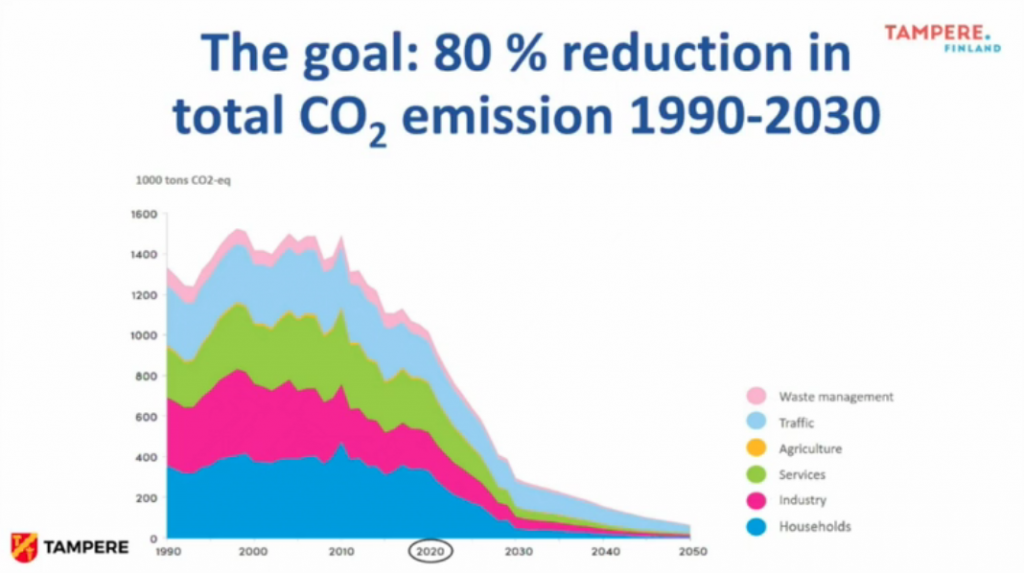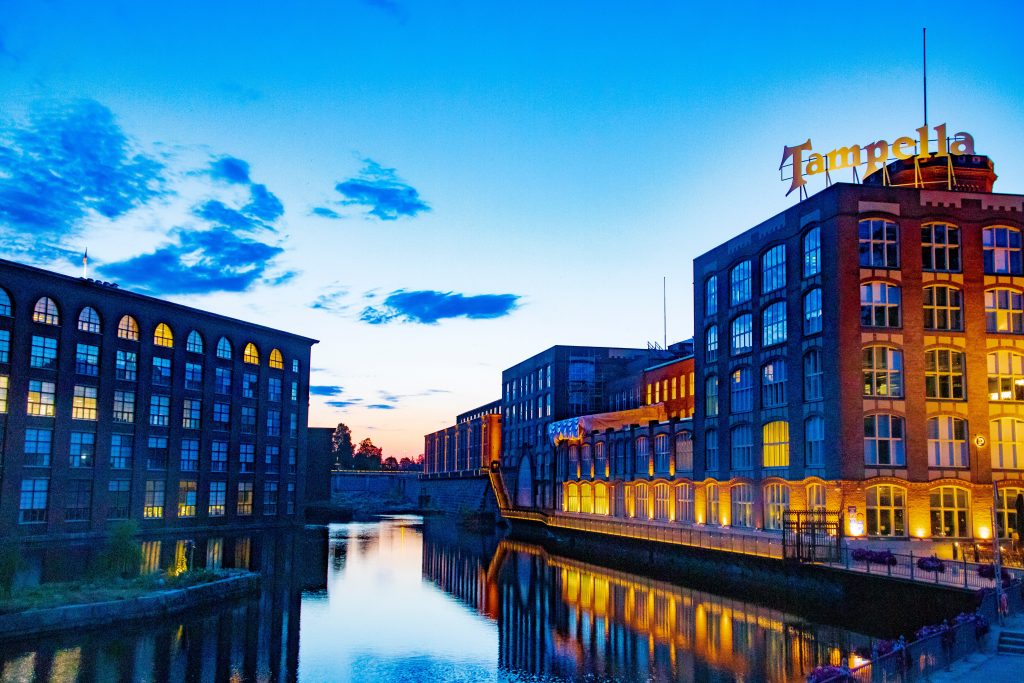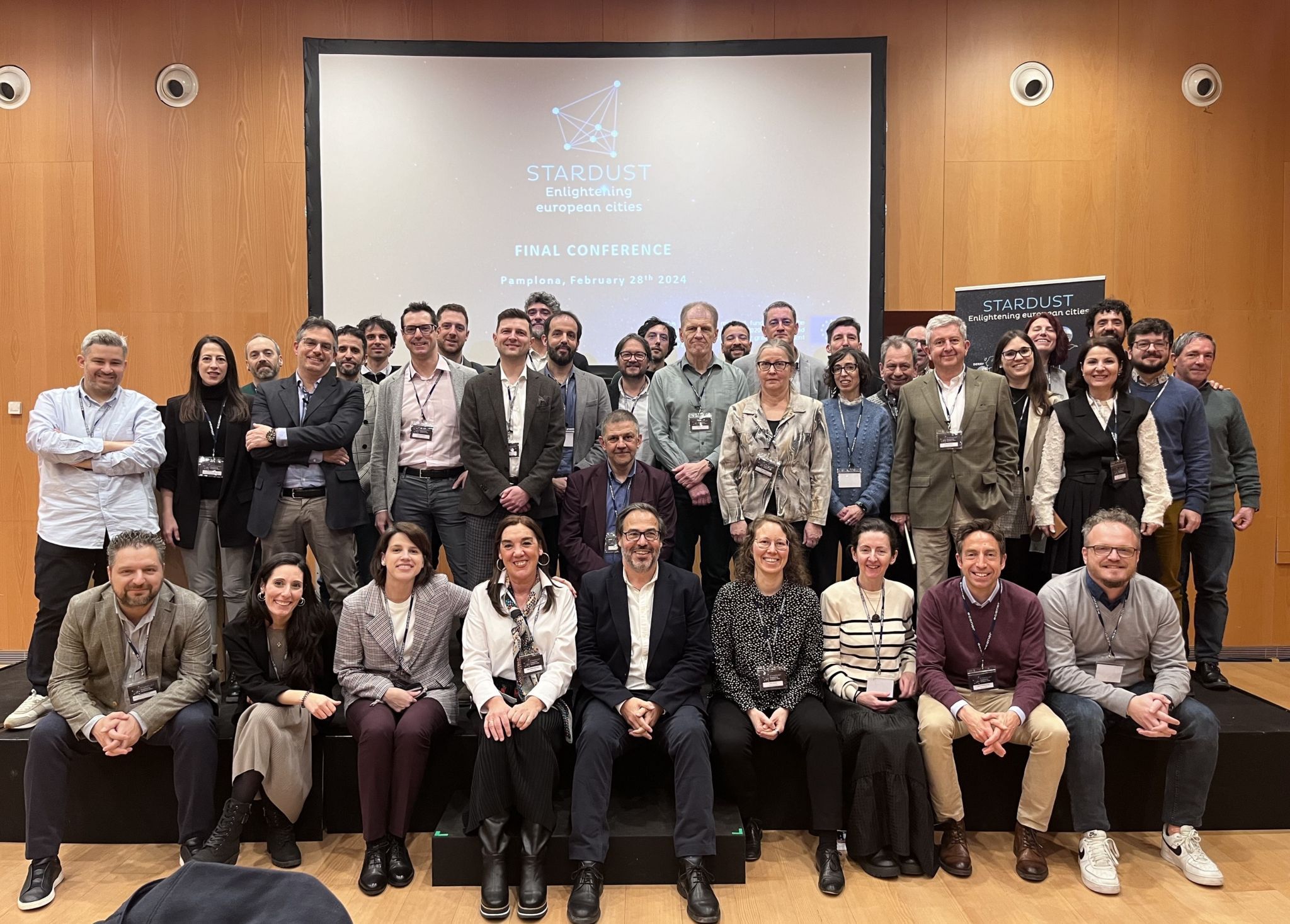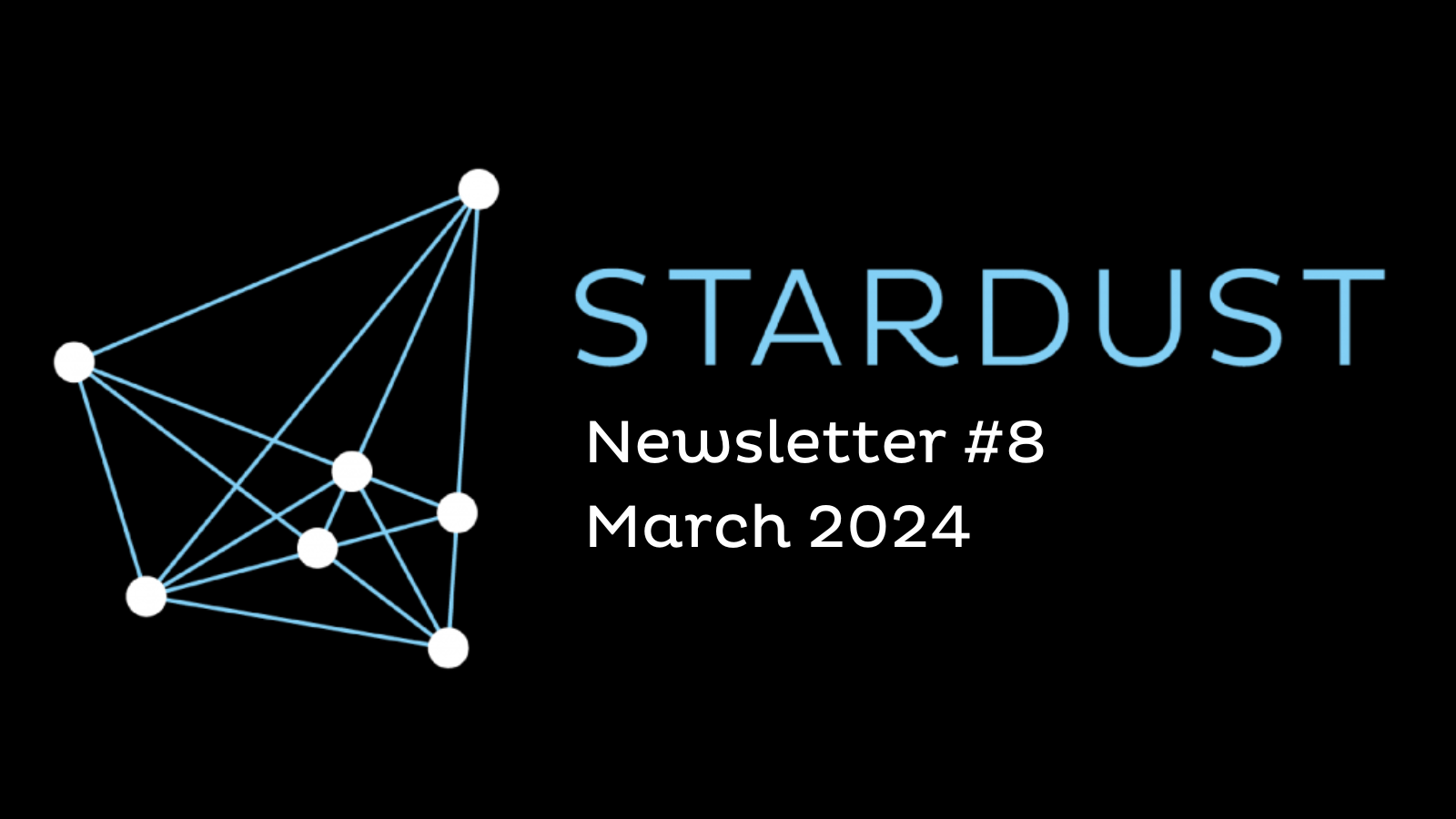January 27, 2021, Tampere – STARDUST partners from Tampere established its online presence at the 2021 Tampere Smart City Week (TSCW) in a number of sessions. They shared their vision on carbon neutrality, and smart city solutions that they have worked on as part of the STARDUST.
Tampere will be carbon neutral in 2030
The local STARDUST partners in Tampere in cooperation with BABLE organised a session on Sustainable Future, which focused on the methods the city is implementing to meet its carbon neutrality goal by 2030. Markus Laine (Tampere University) shared with the audience the latest developments happening in Tampere. This includes the introduction of Nordic superblocks at Hiedanranta, a new residential area in Tampere, and the launch of a new international bachelor degree program on sustainable urban development.
This was followed by Laura Inha (City of Tampere), who explained how to make sustainability a part of people’s lives through the Carbon Neutral Tampere 2030 Roadmap. Climate has been a clear statement as the city built its strategy as highlighted by the title of this section. Guidelines were then made in the process to point the city towards the right direction in achieving its carbon neutrality goal.
In order for Tampere to be carbon neutral by 2030, it must reduce its total CO2 emission by 80% in comparison to the data from 1990. Although work still needs to be done, good progress has already been made as shown by the graph below.

To address this challenge, the city made a roadmap with six different themes centred on sustainability: city planning, mobility, construction, energy, consumption, and urban nature. Every theme has a specific goal in mind, as well as a group action. So far, the city has identified over 200 individual actions. These are implemented in two ways: either through the city’s strategic management system, or through projects such as STARDUST, 6Aika, and UnaLab, and collaborative efforts done with citizens, companies and the university.
Afterwards, Elina Seppänen (City of Tampere) together with her colleague Emmi Nieminen discussed how the climate budget works. By definition, the climate budget offers a systematic way to illustrate how much the city is doing to mitigate and adapt to climate change, and report progress towards goals. It is divided into two sections: emission budget, in which it sets a maximum limit for greenhouse gas emissions, as well as the financial budget, in which financial resources are budgeted for climate measures such as climate change mitigation, adaptation and sustainable mobility. The city of Tampere first referred to Oslo’s climate budget and adapted accordingly.
In relation to the collaboration efforts discussed by Laura, Pirkko Eteläaho (City of Tampere) described in detail the Climate Partnership Model taking place in Tampere. Through this network, companies work together in developing climate actions, while strengthening the local innovative ecosystem.
Lastly, Reijo Väliharju (Hiedanrannan Kehitys Oy) shared plans on making Hiedanranta as a sustainable neighbourhood of the future. Solutions include CO2 negative biochar production, biowaste recycling systems, heat energy storage, sustainable urban food production, and Mobility as a Service (MaaS).
Replicating similar innovative set-ups at a larger scale remains as a big challenge for many smart city projects due to various legal and financial barriers both at a national and European level. Reijo was joined later on by representatives from other EU-funded projects – Merit Tatar (SmartEnCity), Korinna Thielen (Smarter Together), and Maarit Särkilahti (UnaLab) – in a panel discussion on their experience and lessons learnt when integrating novel and sustainable experiments across several cities. Their recommendations take account of creating a vision for the communities involved, and investing on citizen and stakeholder engagement activities. Communication is needed to guarantee their effectiveness and long-lasting impact among the people involved.
As a follow-up to the session, the municipality of Tampere co-hosted a separate workshop together with Business Tampere on sustainable mobility. Entitled, Climate Neutral Mobility, this is the first instalment of the Nordic Transition Workshop Series organised between the Nordic Transition Partnership.
The participants were composed of representatives from different municipalities from the Nordic; they were first asked to deliberate accordingly in separate virtual breakout rooms case studies from Tampere, Halden and Trollhättan. This was followed by a “fish bowl” discussion with three experts namely Eemil Rauma (ITS Finland), Elias Arnestrand (Drive Sweden) and Riku Viri (Tampere University) on selected mobility challenges.
Building a well-connected smart city ecosystem via procurement
Maarit Vehviläinen, the project manager of STARDUST Tampere, presented insights on the Smart City Internet-of-Things (IoT) Platform Purchase Process at the session on Safe Society by Data & IoT Solutions & Private 5G. Outdoor lighting is one of the solutions being implemented by the STARDUST project partners in Tampere. It has a network that forms a natural physical platform, which can be utilised to build an extensive sensor network. IoT acts as a bridge for these two platforms (both the lighting and the sensor) to communicate.
This is just one part of the smart urban environment Tampere wishes to implement across the entire city together with STARDUST. For the system to work efficiently, it would need data harmonisation, translation into the right model, storage, and the proper data analysis. Doing so will allow the staff to understand the issues to be addressed in real time i.e. maintenance and repair, while seeing the bigger picture and systematic design of the city.
“Tampere and Stockholm are both pioneers when acquiring the IoT platform for the city, and it has been great to share experiences along the way,” says Maarit based on her conversation with Maria Holm, who shared a similar story on Stockholm’s procurement process during the session.
As ambitious as it seems, the city of Tampere is on the right track towards decarbonisation. By taking into action what they planned for 2030, the city of Tampere together with the support of the STARDUST project, hopes to become a beacon of hope for many cities seeking to be carbon neutral in the near future.


